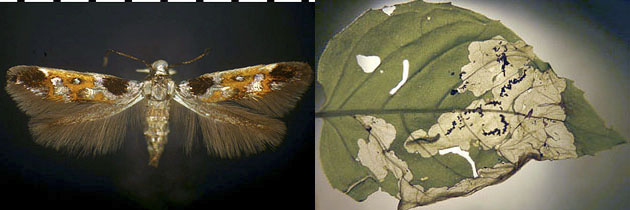
Momphidae was designated as a subfamily, Momphinae, of Coleophoridae by Hodges (1999). About 40 described species occur in North America, all but one of them presently being assigned to the genus Mompha. Larvae are always internal feeders (stem, flower or fruit borers; leaf miners). Foodplant preferences in North America fall out into two groups, Onagraceae/Lythraceae and Cistaceae/Rubiaceae. Adults are small, narrow-winged moths that usually can be differentiated from similar microleps by the presence of two or more tufts of raised scales on the forewing. The few non-Mompha moths of similar size and shape that also have raised tufts on the forewing generally can be differentiated either by their having distinctive forewing-color patterns that do not occur in Mompha (e.g., Walshia spp., Cosmopterigidae) or by structural characters (e.g., in Homosetia, Tineidae, the head vestiture is markedly "shaggy" rather than smooth as in Mompha and other gelechioids). About a dozen Mompha species occur commonly in Illinois.
Onagraceae- and Lythraceae-feeding Mompha species The larva of Mompha terminella (Fig. 1) makes a full-depth blotch mine in the leaf of enchanter's nightshade, Circaea lutetiana (Onagraceae). Active mines can be found from early June through late July; this may indicate two generations per year. The larva leaves the mine to pupate, which it does in a cocoon of white silk. The coloration of the adult (orange and black with metallic markings) is seen in several additional species of Nearctic Mompha, but the species with this coloration do not form a monophyletic group. Mompha terminella also occurs in Europe.

Figure 1. Mompha terminella. Left, adult; right, larva in leaf mine on enchanter's nightshade, Circaea lutetiana (Onagraceae).
Mompha luciferella (Fig. 2) has not been reared. In central Illinois, adults have been collected at light in early July, in deciduous forest near large populations of enchanter's nightshade, Circaea lutetiana (Onagraceae), which likely is the larval foodplant of M. luciferella. If so, then mature larvae most probably would be found by searching C. lutetiana during the second week of June.
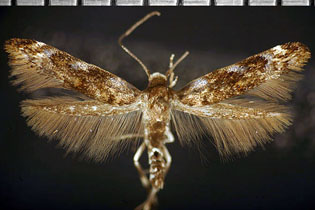
Figure 2. Mompha luciferella. Adult, collected at light.
Mompha circumscriptella (Fig. 3) is one of several eastern-Nearctic Mompha species that feed on evening primroses, Oenothera spp. (Onagraceae). The larva of M. circumscriptella is a borer in the fruit of its host, with pupation occurring inside the fruit. The infested fruit does not show any externally-visible evidence to indicate the presence of the M. circumscriptella larva, and the best strategy for rearing is simply to collect and cage entire clusters of fruits.
Considerable variation in size of the adult moth and in ground color of the forewing can occur in M. circumscriptella, depending upon the particular species of Oenothera from which the moth is reared (see photo caption). Genital morphology of all of these different entities is identical, so that, on basis of morphology, all appear to represent a single species, with the observed variation being non-genetic and determined by the larval foodplant. Molecular studies might be warranted here, to shed more light on the exact relationships of these moths.

Figure 3. Mompha circumscriptella. Moths reared from two different species of evening primrose, Oenothera (Onagraceae). Left, small, cinnamon-brown form reared from O. laciniata, which has a relatively small, narrow fruit; right, large, chocolate-brown form reared from O. biennis, which has a relatively large, massive fruit.
The larva of Mompha murtfeldtella (Fig. 4) also feeds on the reproductive tissue of evening primroses, Oenothera spp. The adult is somewhat similar to that of M. circumscriptella, but the white patch on the posterior margin of the basal half of the forewing is much less extensive in M. murtfeldtella than in that species, and the forewing ground color, which consists of a rather mottled amalgam of grayish brown, rust, and white, with small dashes of black, is less uniform than in M. circumscriptella.
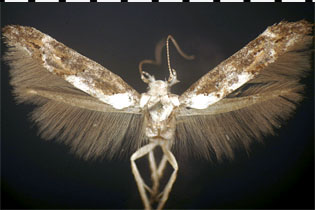
Figure 4. Mompha murtfeldtella. Adult, collected at light.
Mompha brevivittella (Fig. 5) is another species that feeds as a larva in the capsule of evening primroses, Oenothera spp., most frequently O. biennis.
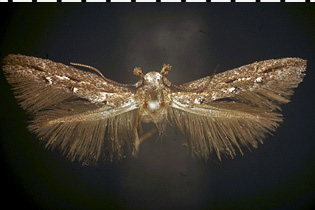
Figure 5. Mompha brevivittella. Adult, reared from seed capsule of evening primrose, Oenothera biennis (Onagraceae).
Mompha eloisella (Fig. 6) is a stem borer in evening primroses, Oenothera spp., including O. biennis. It also has been reared from stem-boring larvae in an alien plant, purple loosestrife, Lythrum salicaria (Lythraceae). Pupation takes place inside the stem. The adult is easily recognized by its distinctive coloring and pattern. Remarkable size variation is seen in the adult of this moth, but genital morphology argues that only one species is represented.
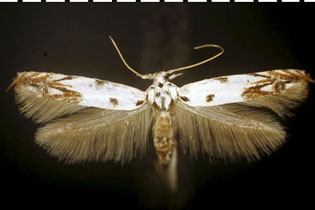
Figure 6. Mompha eloisella. Adult, collected at light.
Mompha stellella (Fig. 7) is a flower borer in evening primrose, Oenothera biennis, and possibly in additional Oenothera species; it pupates inside the affected flower, in a cocoon of dense white silk. Whereas an uninfested flower of O. biennis is basally narrow, tubular, and elongate, a flower infested by M. stellella has a distinctive, relatively sessile form (see figure). The mature larva is pinkish brown, with the anterior part of each segment darker than the posterior part, which imparts a somewhat banded appearance to the larva. This species is univoltine, with mature larvae occurring around mid-August in central Illinois. There is in Illinois an undescribed Mompha species (known only from adults collected at light; life history unknown), the adult of which is externally very similar to M. stellella. The two are, however, discernibly different in male genital morphology, the most easily-seen difference being that the uncus is bifid in M. stellella and trifid in the undescribed moth.

Figure 7. Mompha stellella. Top: adult, reared from flower-boring larva on evening primrose, Oenothera biennis (Onagraceae); bottom: left, O. biennis showing a normal, uninfested flower (on left-hand side of stem) and a flower infested by the larva of M. stellella (on right-hand side of stem); right, mature larva of M. stellella, exposed by opening the infested flower that is shown in the left-hand panel.
The larva of Mompha rufocristatella (Fig. 8) induces a gall on the flower stem of biennial gaura, Gaura biennis (Onagraceae). Galls have been collected in central Illinois in late August, with moths emerging straightaway. When the larva finishes feeding, it gnaws almost entirely through the wall of the gall in a small circular area that will serve as an "emergence window" for the adult. The larva then spins a cocoon of soft white silk, inside which it pupates within the gall; the head end of the cocoon is continuous with the emergence window. The adult is somewhat similar to M. murtfeldtella and M. stellella, but the raised scale tufts of M. rufocristatella are of a markedly reddish color (thus the species name, which means, roughly, "red tufted").
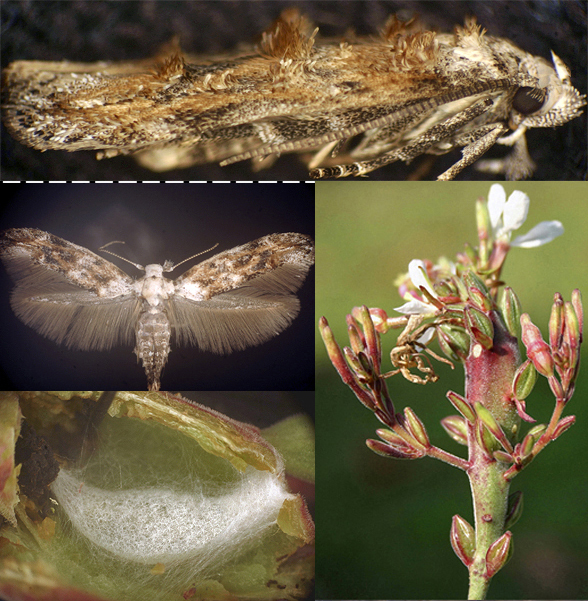
Figure 8. Mompha rufocristatella. Top: adult, reared from gall on flower stem of biennial gaura, Gaura biennis (Onagraceae); unspread individual, right-lateral aspect, showing the raised tufts of reddish scales on the forewing; center left: spread adult; bottom left: gall (rotated 90 degrees from "upright" orientation seen in right-hand panel), dissected to reveal cocoon of M. rufocristatella, the head (right-hand in this photo) end of which is seen to be continuous with the emergence window prepared by the larva; right: gall induced by larva of M. rufocristatella on flower stem of G. biennis, with emergence window visible as a round whitish spot near the apex of the gall.
There are found in Illinois several small "black and white" Mompha species (Fig. 9). Hodges (1992) reported that at least 12 such species exist in the USA; most of them remain undescribed. One of these species was reared by Annette Braun in Ohio, from blue waxweed, Cuphea viscosissima (Lythraceae). This perhaps is not surprising, as an association with Cuphea spp. has been reported for Mompha in the Neotropical region as well (Graham 1995).
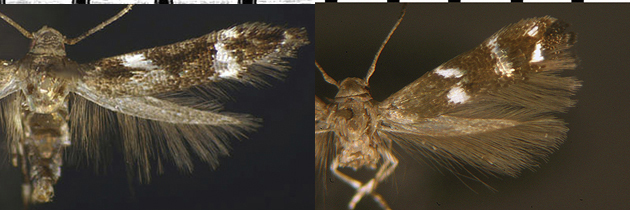
Figure 9. Mompha spp. of the "black and white" color group. Adults, collected at light.
Mompha argentimaculella (Fig. 10) is dark brown with extensive metallic markings on the forewing. It superficially resembles some of the species of Elachista (Elachistidae) but can be distinguished from them by the presence of raised tufts of scales on the forewing (tufts absent in Elachista). Also, a small dark-yellow patch associated with the basal arm of the postmedian V-shaped metallic marking on the forewing is distinctive for this species. The larva of M. argentimaculella is a leaf miner. The species was described from specimens reared from Oenothera biennis (Onagraceae) in east-central Missouri, with mature larvae occurring in mid-August. In central Illinois, it has been reared from Gaura biennis (Onagraceae), likewise with mature larvae occurring in mid-August. James Vargo, who kindly provided the specimen illustrated here, has collected adult M. argentimaculella at light in northern Indiana, in mid- to late July.
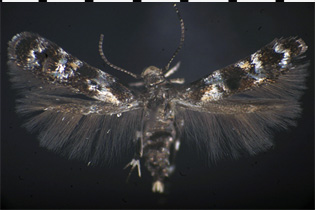
Figure 10. Mompha argentimaculella. Adult, collected at light in northern Indiana. Specimen courtesy of James Vargo.
Cistaceae- and Rubiaceae-feeding Mompha species The larva of Mompha passerella (Fig. 11) (=M. nuptialis) feeds in the seed capsule of Helianthemum and Lechea spp. (Cistaceae). An externally-similar species, M. bottimeri, likewise feeds in capsules of Helianthemum, but M. bottimeri is consistently slightly larger than M. passerella, and the two species are very different on genital morphology.
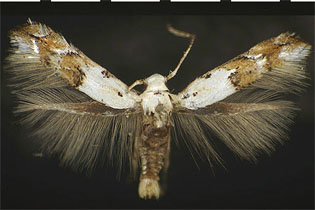
Figure 11. Mompha passerella. Adult, collected at light.
Mompha capella (Fig. 12) likewise feeds as a larva in the seed capsule of Helianthemum and Lechea spp. (Cistaceae); mature larvae occur in late June and early July, with adults emerging during the latter month. In the eastern USA, there are a number of additional, undescribed Mompha species that are externally similar to M. capella. Those that have been reared also feed on Helianthemum spp.
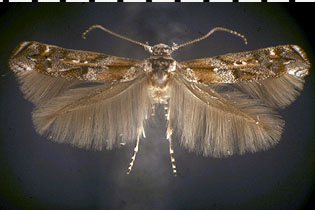
Figure 12. Mompha capella. Adult, reared from seed capsule of Helianthemum canadense (Cistaceae). Specimen courtesy of Dr. George Balogh, who reared the moth in Michigan.
Mompha cephalonthiella (Fig. 13) is a full-depth blotch leaf miner on buttonbush, Cephalanthus occidentalis (Rubiaceae); it leaves the mine to pupate, in a small silken cocoon. In Illinois, it appears to be univoltine, with larvae maturing in September and adults emerging straightaway and overwintering. The forewing coloration of the adult is a combination of bluish gray and rust brown, with minor black markings and very little white, in contrast with the coloration of M. solomoni (below). The two species are also easily diagnosed by their having different genital morphology in each gender.
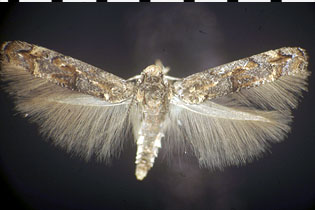
Figure 13. Mompha cephalonthiella. Adult, reared from leaf mine on Cephalanthus occidentalis (Rubiaceae).
As in M. cephalonthiella, Mompha solomoni (Fig. 14) feeds on buttonbush, Cephalanthus occidentalis (Rubiaceae). Unlike M. cephalonthiella, however, M. solomoni is multivoltine. The initial generation of the season occurs early in spring, before the buttonbush is in leaf, and larvae of this generation feed as borers in new shoots. Larvae of all subsequent generations, however, feed in full-depth blotch leaf mines that are similar to those of M. cephalonthiella; pupation occurs outside the mine, as in the latter species. Individuals of the final generation of the year winter as larvae or pupae, in cocoons outside the leaf mines. The forewing coloration of the adult is dull brown with black and white markings. It is most easily differentiated from M. cephalonthiella by the presence, at mid-length of the wing, of a dark blotch that is bordered anteriorly by a narrow black crescent-shaped marking that is edged anteriorly with white (this marking often persists even in worn specimens). As mentioned under M. cephalonthiella, the two species differ substantially on genital morphology in both genders.
This species was not recognized as being different from M. cephalonthiella until the work of Harrison revealed extensive differences in genital morphology of reared moths of both genders. Until then, most series of "M. cephalonthiella" from Illinois were primarily or exclusively M. solomoni, as it is by far the more common of the two species within the state. This moth was formally described and named by Wagner et al. (2004). It is named for Dr. James Solomon, who first noted the shoot-boring habit of the initial generation of the year.
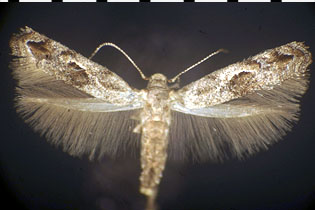
Figure 14. Mompha solomoni. Adult, reared from leaf mine on Cephalanthus occidentalis (Rubiaceae).